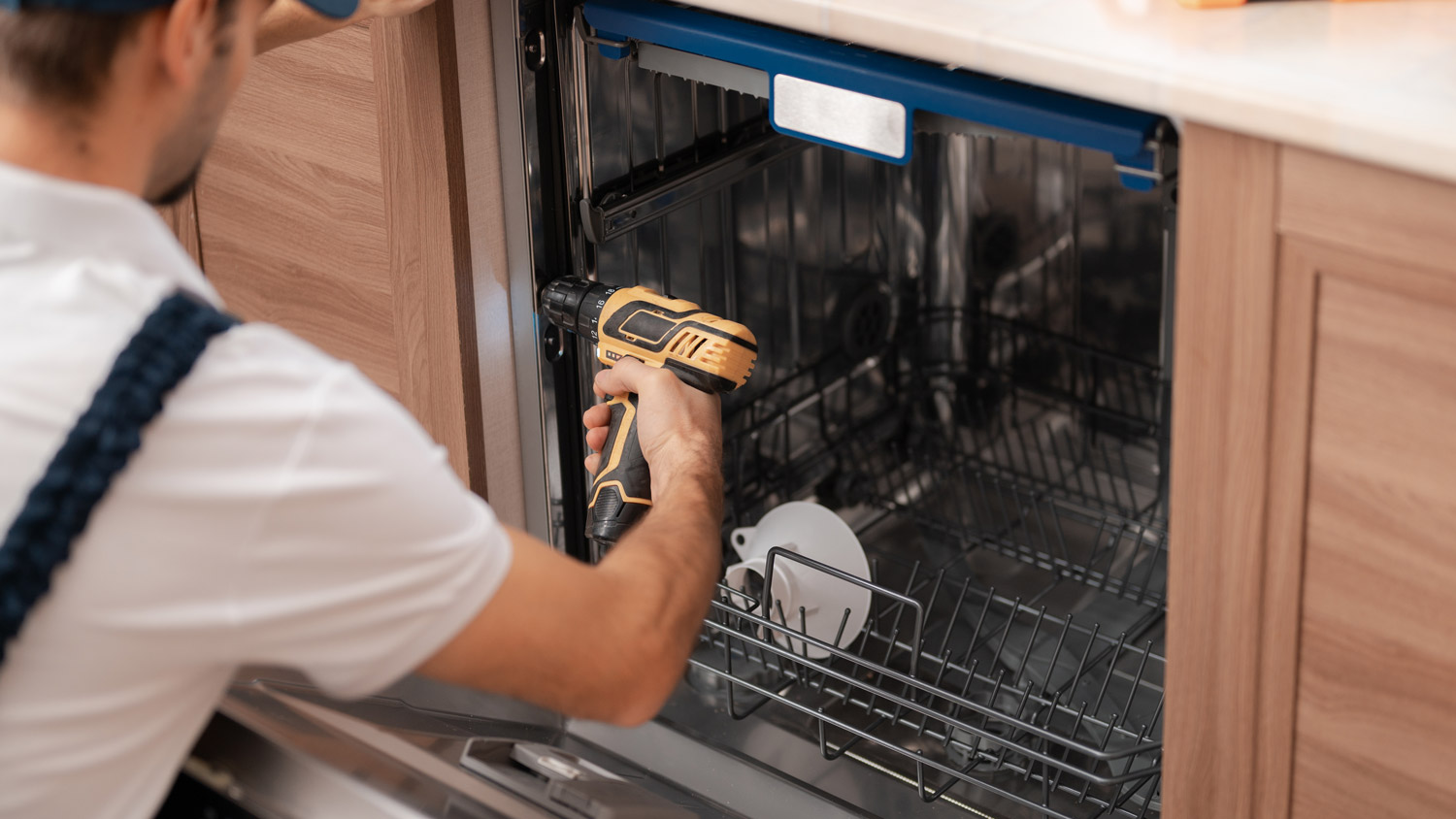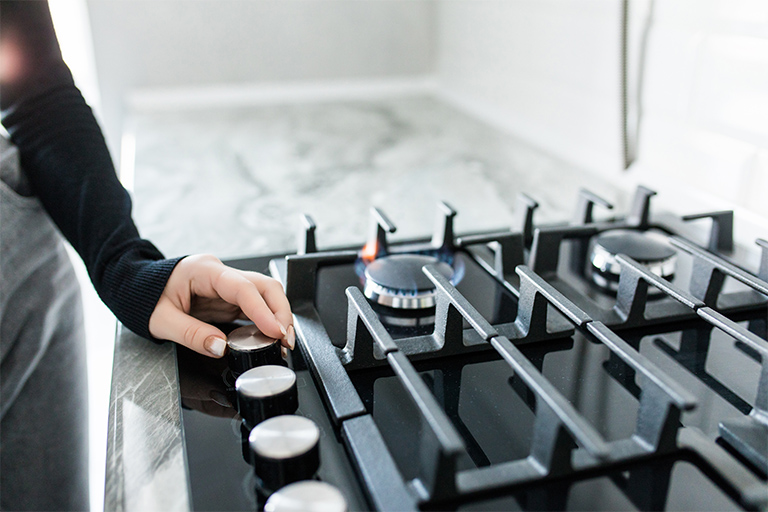
Discover the average dishwasher installation cost, key price factors, and tips to save on your project. Get transparent, expert-backed estimates.
A cool fridge means fresh food


The ideal temperature for a refrigerator is 35 to 38 degrees Fahrenheit.
Lower numbers on a dial thermostat are the coldest fridge temperatures.
An appliance thermometer can test temperatures for accuracy.
Keep your fridge full to maintain internal temperatures.
From accidentally biting into a frozen fruit you took out of the fridge to discovering your perishable foods have gone off way faster than expected, the wrong fridge temperatures can leave you with nothing to eat. Fortunately, sometimes all you need to do is turn the dial on your temperature control. In this guide, we’ll discuss a few tips for setting the correct refrigerator temperatures to get the most out of your appliance.
The wrong fridge temperature can cause bacteria to flourish or ice to develop on your food, so it’s important to know what temperature to set on your refrigerator. The ideal temperature for a refrigerator is anywhere from 35 to 38 degrees Fahrenheit, though you can get away with temperatures of up to 40 F, according to the U.S. Food and Drug Administration (FDA). Anything above 40 F will lead to an unpleasant science experiment in your fridge, while anything below 32 F will cause freezing in your fridge.

You might be surprised to see a range for ideal fridge temperature, but that’s to give you some wiggle room in case the internal thermometers aren’t exact. Set your fridge at 35 degrees if 38 gets too warm and causes food to spoil more quickly. If you’re at 35 or 36 and you find that your food is icy, push the temperature dial up to 38 degrees. You can also adjust based on how often someone in your home opens your fridge and the outside temperature—set the temperature lower if you open the fridge often or in the summer if it’s hotter in your home.
Keep in mind that this range is for the center of your refrigerator. Typically, the warmest parts of the fridge are the sides and top sections, while the bottom section is the coldest because heat rises and cold air sinks. The exception includes refrigerators with a freezer compartment on the top section, which will have a colder temperature surrounding the compartment.
While you may be aware that maintaining the ideal refrigerator temperature is essential for preventing food spoilage, you may not know that freezer temperature is important for the health of both your appliance and your household. According to FoodSafety.gov, the proper freezer temperature for storing frozen foods is 0 degrees Fahrenheit.
Maintaining a temperature of 0 degrees Fahrenheit consistently is essential for safe long-term storage. While you always want to rely on a functioning thermostat to monitor your freezer's temperature, there are also some telltale signs that your freezer is set at the right temperature. Look for these signs:
You Aren't Noticing Any Frost: Frost is a sign that your freezer temperature may be too low to remove moisture. If you see icy sheets on freezer door seals, this is a sign that air that could be jeopardizing temperature stability is seeping into your freezer.
Ice Cream and Other Frozen Treats Are Solid: While the serving temperature for ice cream is closer to 5 degrees Fahrenheit to 10 degrees Fahrenheit, it needs to be stored at 0 degrees Fahrenheit or below. Soft ice cream is a sign that your freezer's temperature is too low.
You Aren't Tasting Freezer Burn: Does food you take out of your freezer have the telltale smell or aftertaste of freezer burn? Freezer burn is often caused by improper temperatures, but it could also be caused by improper packaging or putting food in the freezer while it's still hot.
Your Frozen Vegetables Look Good: Frozen veggies can tell us a lot about freezer temperature. They should be hard, firm, and free of crystals. If your frozen vegetables look limp, this is a telltale sign that your freezer isn't cold enough.
While letting your freezer get too warm can ruin food, setting the temperature too low can be bad for it. Maintaining an overly cold temperature can waste energy and cause ice crystals to form all along your freezer's walls.

Though the fridge and freezer temperatures are fairly straightforward, many appliance models aren’t so simple to set properly. Many don’t even have a thermometer that tells you the actual temperature, while those with a temperature reading might not match the temperature you set on the thermostat!
Your basic fridge may use a simple dial with numbers for setting the temperature. Most commonly, you’ll see a series of numbers around the dial ranging from one to five. The highest number represents the warmest temperature, while the lowest number represents the coolest temperature.
Lower doesn’t always mean better, however. If you set the temperature too low, it will cause ice formations that may hinder air circulation. Not to mention, it will increase your energy bills! A good rule of thumb is to choose numbers three or four for a full fridge and two or three for an emptier fridge.
Since the dial settings or built-in thermostat aren’t always the best indicator for the right temperature for your appliance, you might want to buy an inexpensive appliance thermometer to test the temperature. Simply put the thermometer in the fridge for 30 minutes, and take a look at the reading. Adjust the thermostat as needed to maintain the recommended temperature.
If your newer fridge struggles to maintain the correct temperature, contact an appliance repair specialist to see if they can figure out if any problems are plaguing your fridge. Sometimes, it could be as simple as a leaking ice maker, broken thermostat, or damaged door seal causing the issue. You can diagnose the issue in some cases—like if the fridge is not cooling but your freezer is cold, it’s likely a thermostat issue—but we recommend you call in a refrigerator repair service near you to check it out.
On average, the cost to repair a refrigerator generally falls between $200 and $300, although the cost depends on what repair you need. Repairing a fridge compressor costs more than cleaning condenser coils, for example.
For older appliances around 12 years old or older, it might be time to replace your fridge entirely and upgrade to a new one. The good news is that your new fridge will likely reduce your energy consumption and lead to some savings on your energy bills, as well as fix problems with your fridge not cooling properly.
According to FoodSafety.gov, a refrigerator will keep food safe for up to four hours during a power outage. The best way to get four full hours of coverage is to avoid opening the door as much as possible. After four hours without power, all meat, fish, dairy, poultry, eggs, leftovers, and other perishable items should be discarded.
Once power is restored, continue to monitor the internal temperature of your refrigerator. Depending on how long the power was out, it can take a refrigerator anywhere from two hours to a full day to reach an ideal temperature of 40 degrees Fahrenheit or below.

Even with the most diligent thermometer testing and meticulous temperature settings, you may still find that your appliance struggles to stay consistent. Here are a few ways to make your fridge more efficient and prevent your refrigerator temperatures from fluctuating:
Keep your fridge full to insulate and stabilize the temperature.
The door of your refrigerator is the warmest area, so store foods less susceptible to bacteria in the door and more perishable goods in the bottom and center of the fridge.
Open the refrigerator doors as little as possible to prevent cold air from escaping.
Don’t leave the doors open for long while taking out food or putting it away.
Avoid storing tall items in the back of the refrigerator, as they can prevent air circulation.
If your refrigerator is struggling to maintain the right temperature, you might be wondering if it's time to either get the problem fixed or upgrade to a new refrigerator. The answer to whether to repair or replace a refrigerator comes down to why your refrigerator is struggling. In some cases, poor temperature regulation could be caused by loose door gaskets that aren't allowing the door to seal properly after it's been shut. A telltale sign of a loose gasket is that you can feel cold air as you run your hand along the edge of a refrigerator door. Fixing a refrigerator door's seal can be an easy and inexpensive task in most cases.
Other causes of refrigerators struggling to cool properly that can often be easily fixed include blocked air vents and dirty condenser coils. However, you may also be looking at a malfunctioning condenser fan motor, faulty compressor, or problems with other parts of a refrigerator that could be more expensive to fix. There are two main things to consider when choosing between repairing and replacing your refrigerator. First, check to see if a faulty part could still be under warranty before you call someone who fixes refrigerators.
If it turns out that you'll be paying out of pocket for refrigerator repairs because your appliance is no longer under warranty, there's a general rule to follow. If the repairs total half the cost of replacement, upgrading to a new refrigerator is recommended. If the repairs will be less than half the cost of buying a new refrigerator, there could be a cost advantage to getting the issue fixed instead.
From average costs to expert advice, get all the answers you need to get your job done.

Discover the average dishwasher installation cost, key price factors, and tips to save on your project. Get transparent, expert-backed estimates.

Discover the cost to install a gas cooktop. Learn about average prices, key cost factors, and tips to save on your gas cooktop installation project.

If your dated appliances don't impress, it's time for a refresh. We break down the cost to refinish appliances, including ovens, refrigerators, washers, and more.

Overwhelmed with dishwasher options? Learn about the different types of dishwashers to increase efficiency and space in your kitchen.

Cooking in your kitchen wouldn’t be possible without a range hood to capture all of that greasy smoke and billowing steam. This guide breaks down the types of range hoods and their benefits and drawbacks so you can make an informed decision.

How do wood stove fans work, and why do you need one? Learn how to boost your home’s heating efficiency with our comprehensive guide.